Hélène de Beauvoir: the talented Parisian artist with a very famous sister
Simon's younger sister was a brilliant, prolific painter, and her work is finally being celebrated with a solo exhibition in London.

In 1910s Montparnasse above Cafe de la Rotonde (where the likes of Pablo Picasso, Amedeo Modigliani, and Jean Cocteau spent many days and nights popping in for a coffee or a lunch on the terrace) lived two young girls called Hélène and Simone, just two years apart in age. They were both strong-willed and determined to follow their own path. The eldest, Simone de Beauvoir would become a trailblazing feminist activist, philosopher, and novelist.
The youngest, Hélène de Beauvoir would become a prolific painter, focusing on themes of feminism and women’s issues well into her 80s. She exhibited her work throughout the world, in the US, Japan and Europe. Indeed she was the first of the sisters to achieve a level of recognition. When in 1936, at the age of 26, Hélène held her very first art exhibition at Galerie Bonjean (incidentally co-founded by Christian Dior) in Paris, she caught the eye of a certain Mr Picasso, who declared “Your painting is original!”
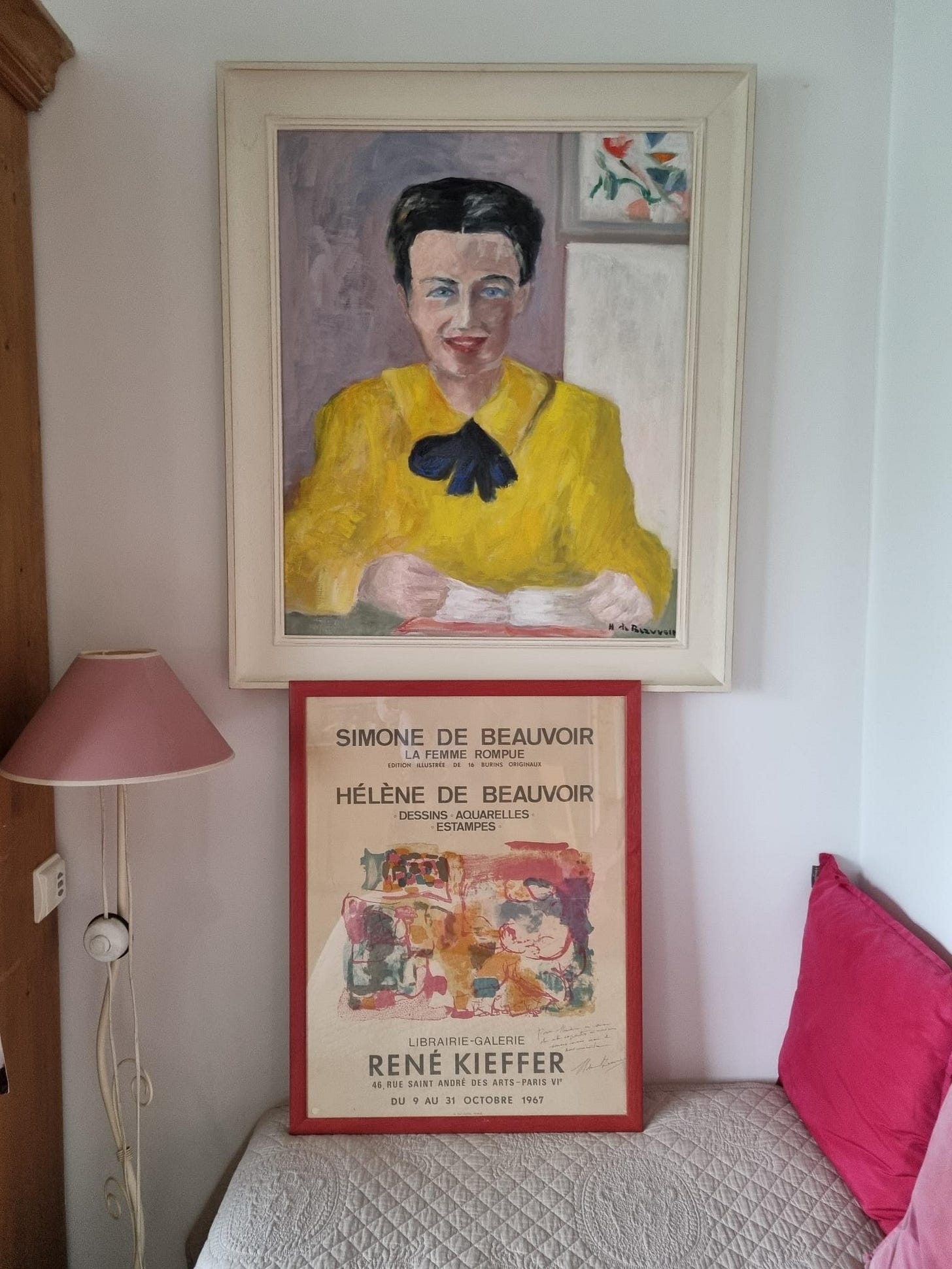
Yet, despite such early praise and a clear talent, Hélène’s name has become less recognisable as time has gone on. Yet gallery owner and art dealer Amar Singh is hoping to bring new attention to Hélène’s work with a newly launched exhibition that’s taken him three years to curate. ‘Hélène de Beauvoir: The Woman Destroyed’ at the Amar Gallery in London is the first UK solo exhibition of Hélène’s work and has already garnered much press attention with articles in The Guardian and Harper’s Bazaar.
Naturally, the theme of a forgotten artist finally getting recognition after a lifetime of honing her craft, piqued my interest, and I decided to look further into Hélène’s life. Undoubtedly, and corroborated by Hélène, the bohemian surroundings of her childhood influenced her immensely.
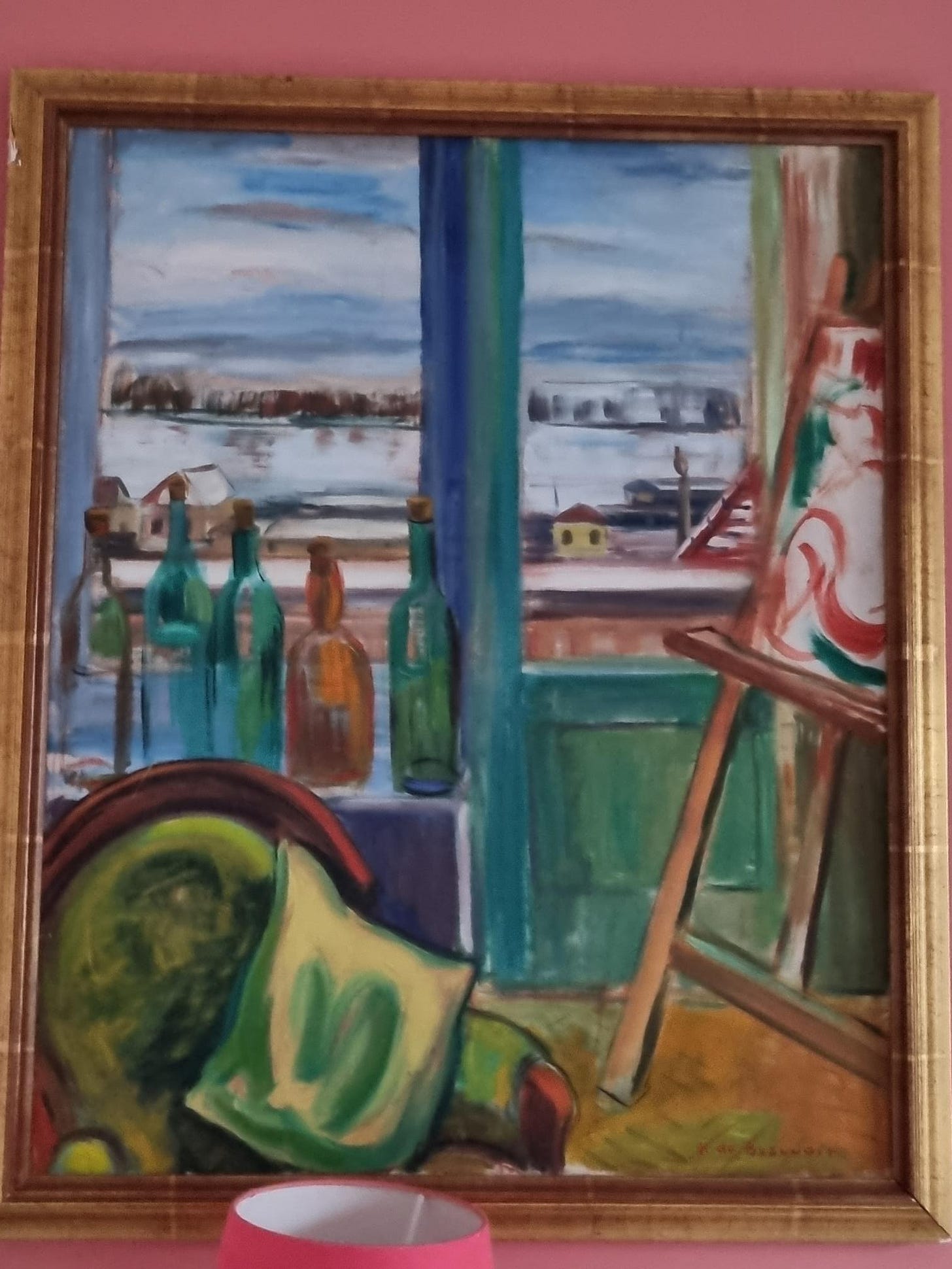
Though her father disapproved of Picasso ("It's shameful! A man like that should be shot!”), both Hélène and Simone witnessed from the balcony of the fifth floor “a parallel world” to their conservative upbringing. “How amusing it must be,” she said. “It was during these moments that I dreamed of being part of the artist world.”
So too was Hélène inspired by illustrated books that she could get lost in, particularly by Comtesse de Ségur, as well as Les Contes de Perrault, illustrated by Gustave Doré. Of course Simone, older by two years and already wise beyond her years proved to be an enchanting sister and together they would play at being heroes and villains. Simone apparently would inevitably play the winner and the heroine in these games. You could say that this was the start of a pattern that would repeat itself throughout their lives.
It was clear very early on that Simone had a literary talent; she would write short stories and read them to her family in the evenings. Whether consciously or unconsciously, Hélène decided to forge her own path, saying “Two sisters doing the same thing; unless they are the Brontës, it cannot be a success.” Inspired by the heady mix of her surroundings, charming illustrated picture books and regular visits to The Louvre (“The Louvre was my mass,” she said), Hélène started to take drawing classes as a teenager.
Very quickly Hélène learned that painting was a way for her to engage in a dialogue with herself, to be creative for her own self, while also communicating with the world around her. At just 15 years old, she wrote in her diary: “The painter must show everyone what they want to see and always reserve a little corner all to himself.”

Hélène attended the Art et Publicite school near her home, where she discovered oil painting. She would say “It’s my drug. I love working with it, I love its fluidity, the suppleness of its technique, I love breathing in the smell of turpentine."
For Hélène painting became a way of life, producing around 3,000 works across her lifetime. Looking back at these now they are extremely biographical, chronicling her life on canvas. One of her early paintings depicts Simone before she was even published, in vibrant optimistic yellow, an open book in front of her.

Having married a diplomat, Lionel de Roulet, Hélène would spend much of her life living in various parts of the world (in no particular order, Lisbon, Milan, Morocco, Vienna, the former Yogoslavia, and Strasbourg). Many of these places, and more are documented in oil paint. Hélène painted angular gondolas in Venice, captured the view from her studio in Milan, recreated the colourful swish of skiers against shades of white, and celebrated the verdant colours of an Alsace castle on a leafy hilltop.
However, Hélène wasn’t averse to exploring all aspects of humanity, women’s rights and activism. In May 1968, she created a series of 30 paintings focused on the civil unrest happening in France. In the 1970s, Simone would introduce Hélène to Claudine Monteil, one of the founders of the French Women’s Liberation Movement in 1970. Although Monteil was 40 years younger, she would become a lifelong friend of the de Beauvoir sisters, and Simone’s husband Jean-Paul Sartre, hosting them at her home whenever they came to Paris.
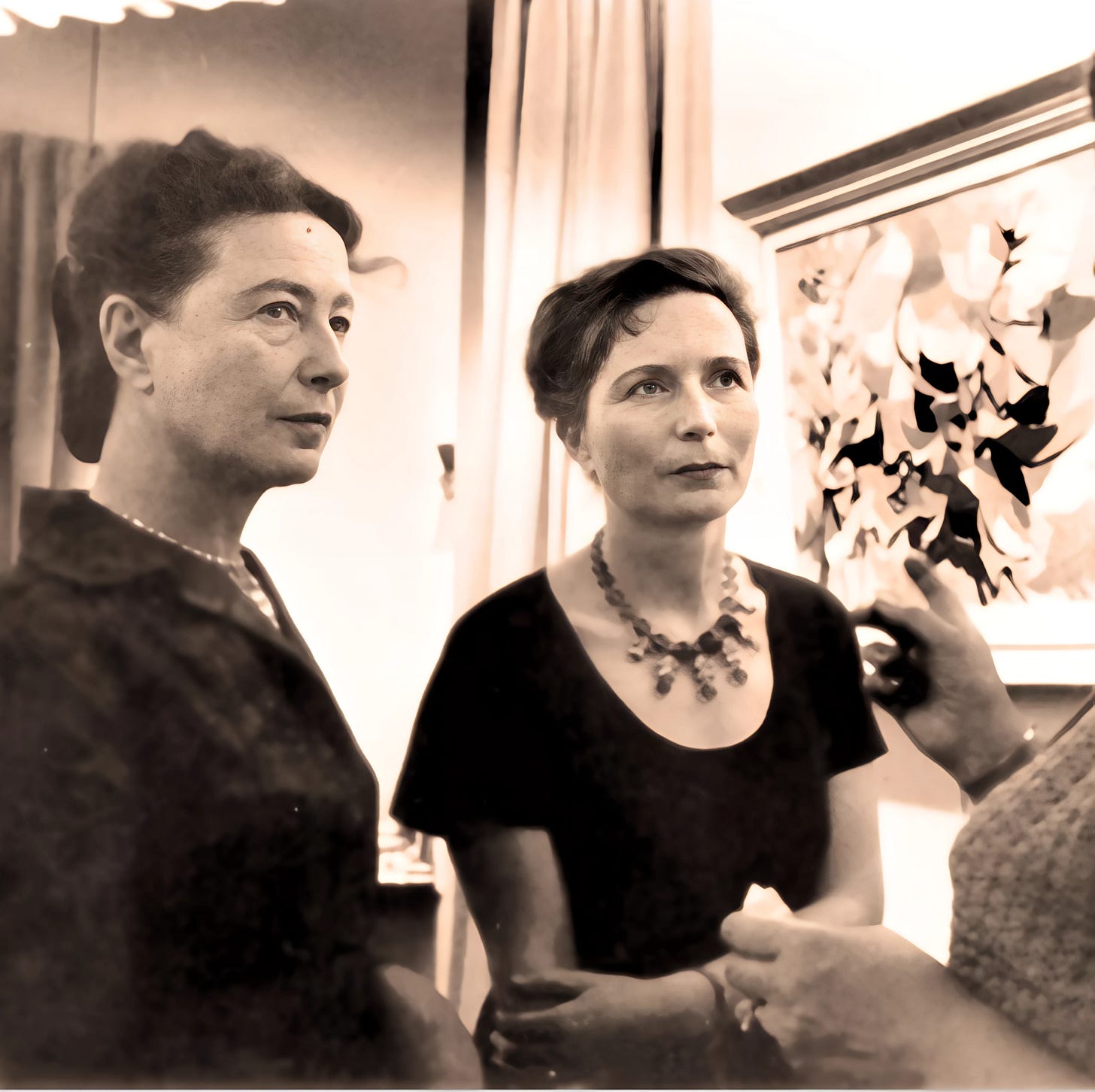
Although Hélène had exhibitions around the world, in places such as Venice, Florence, Milan, Paris, and Berlin, and received favourable reviews, many critics couldn’t help but compare Hélène to her older sister: “The tidy young girl has become a great painter. Talent runs in the family.”
The comparisons obviously haunted Hélène throughout her life. In a recent article in Harper’s Bazaar, Monteil revealed that even days before she died, Hélène asked her friend “Do you think people are coming to see my paintings because I am Simone’s sister? Claudine, do you think my paintings will still be seen when I am dead? Do you think they still remember my paintings in Paris?” There’s little doubt that in these words Hélène wished for recognition.
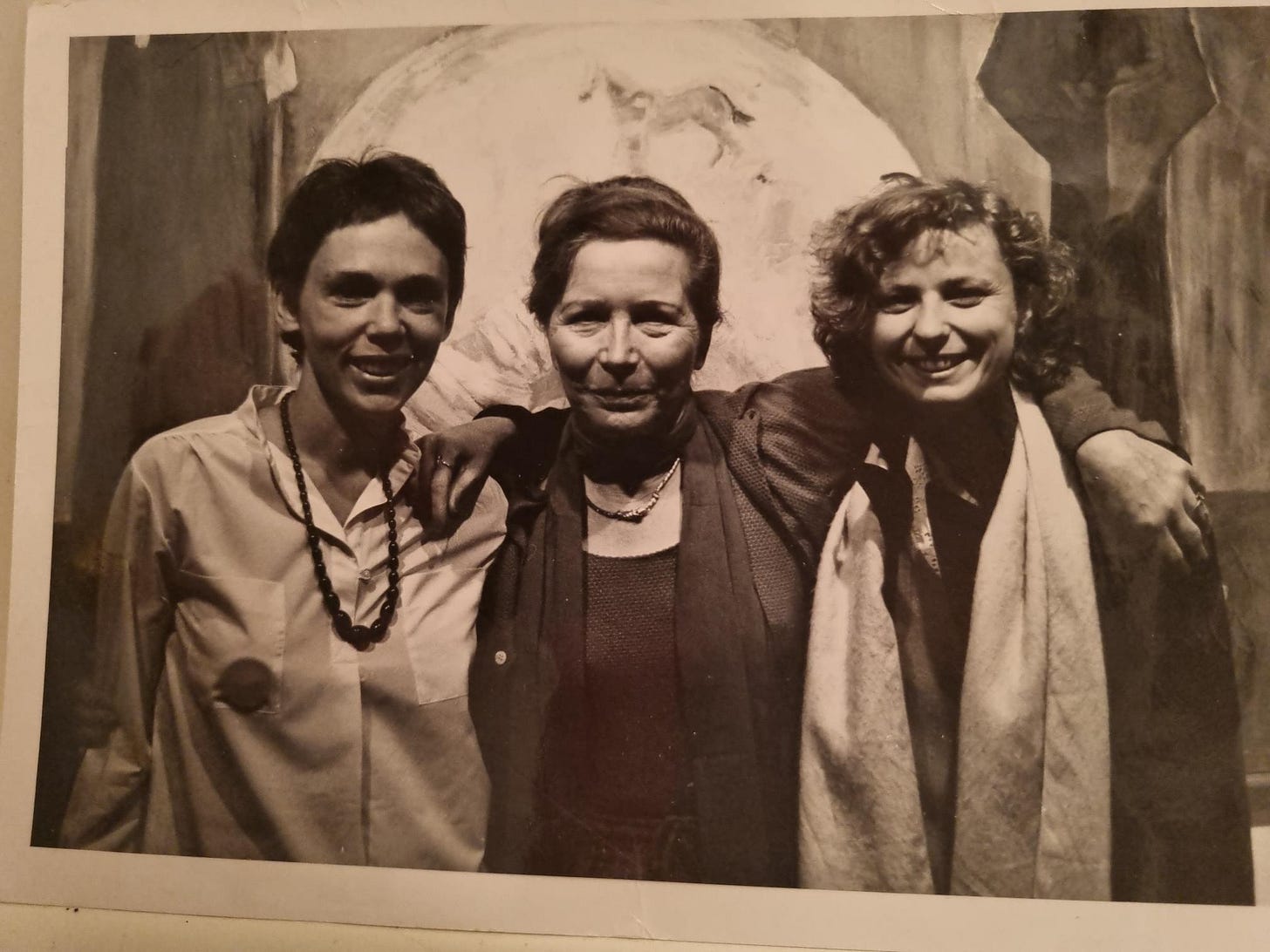
Fast forward to Thursday 23rd January and I’m at Amar Gallery in London. It’s the preview night of ‘Hélène de Beauvoir: The Woman Destroyed’ and the gallery is packed with people of all ages, enjoying organic orange wine that visually zings against the blue shades of some of Hélène’s abstract paintings.The atmosphere is buzzing and I notice there are some famous faces in the crowds.
But the guest of honour has surely got to be Simone and Hélène’s friend, Claudine Monteil. My friend Sarah and I manage to briefly speak to Monteil, who kindly gives us a few minutes of her time. How does it feel to be here, with all of these paintings by Hélène presented so beautifully in this gallery, I ask her.
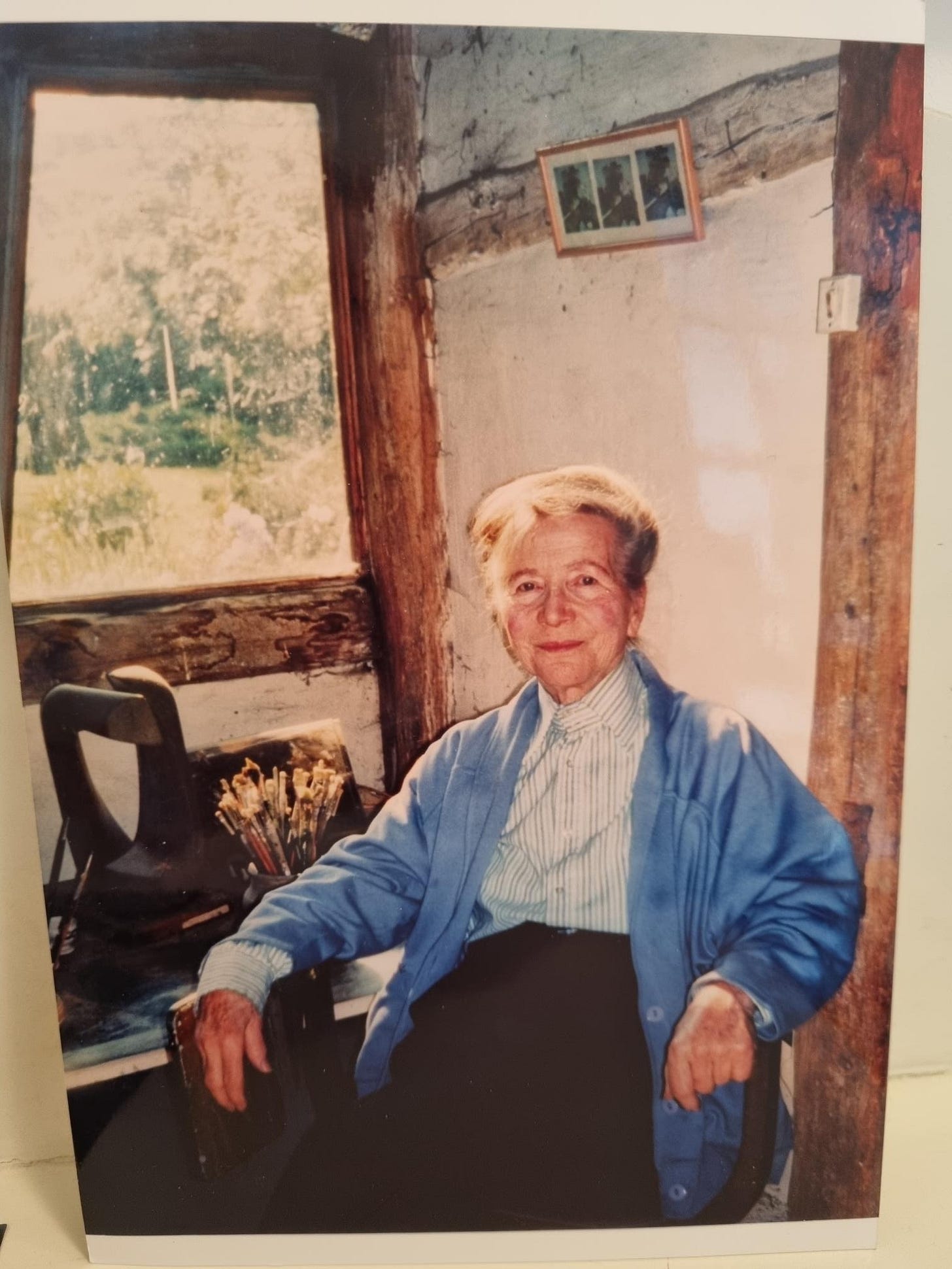
“It is wonderful being here,” Monteil tells us. “Seeing all of these young people looking at Hélène’s work, knowing that the next generation will remember her.” Looking around at the many people who have come to admire, discuss, and write about Hélène de Beauvoir, the painter, it’s clear that her works are lasting monuments to a vibrant life. As Picasso noticed, her originality has prevailed and the legacy of Hélène de Beauvoir, the girl who watched artists from a fifth floor balcony in Montparnasse, lives on.
‘Hélène de Beauvoir: The Woman Destroyed’ is taking place at Amar Gallery, London, 24th January – 2nd March 2025. For more details, visit the Amar Gallery website.
Many thanks to the Amar Gallery and Claudine Monteil for sharing some of the amazing biographical information I have used in this post.





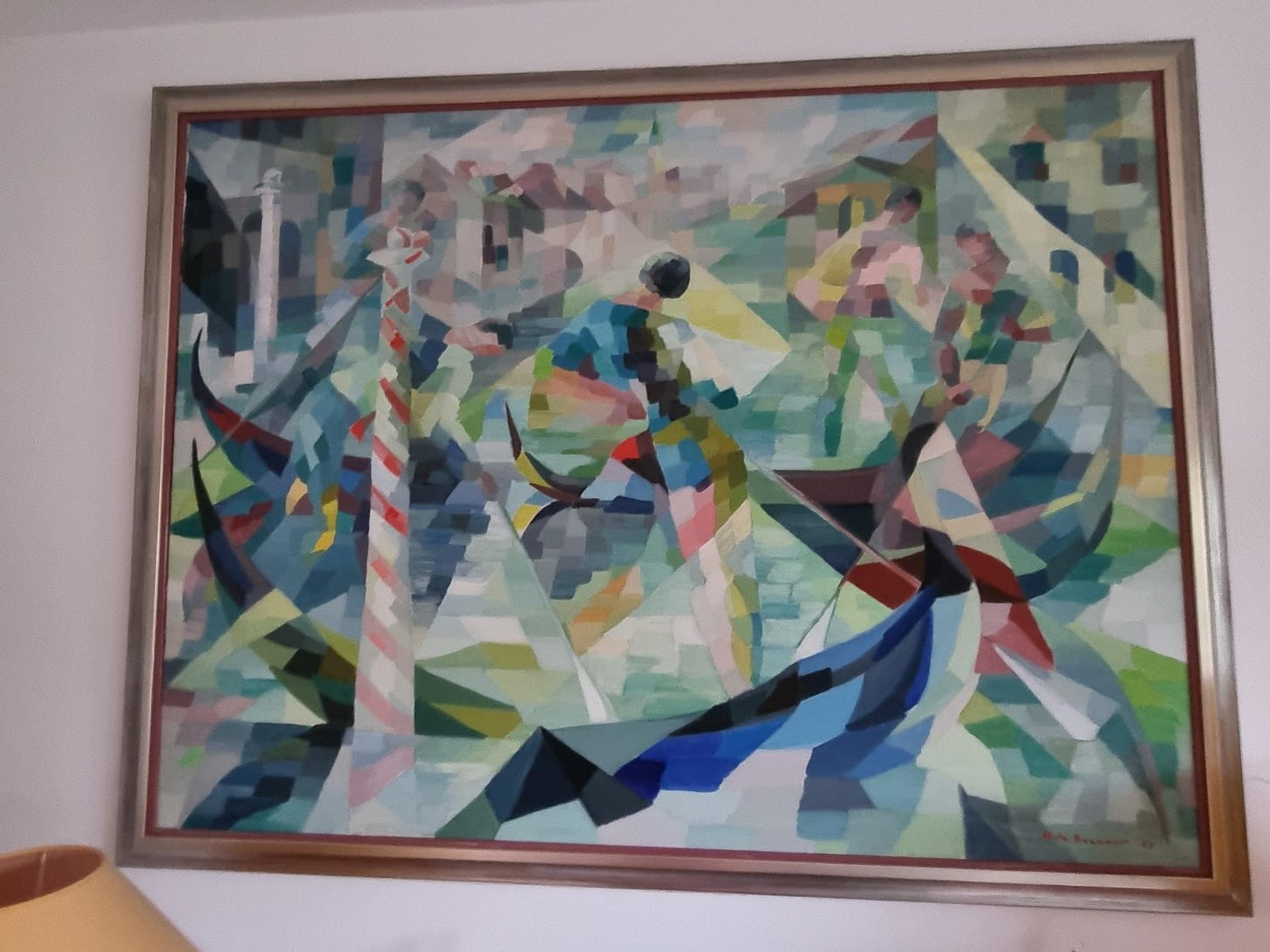
Love this wonderful story and insight into another inspirational figure